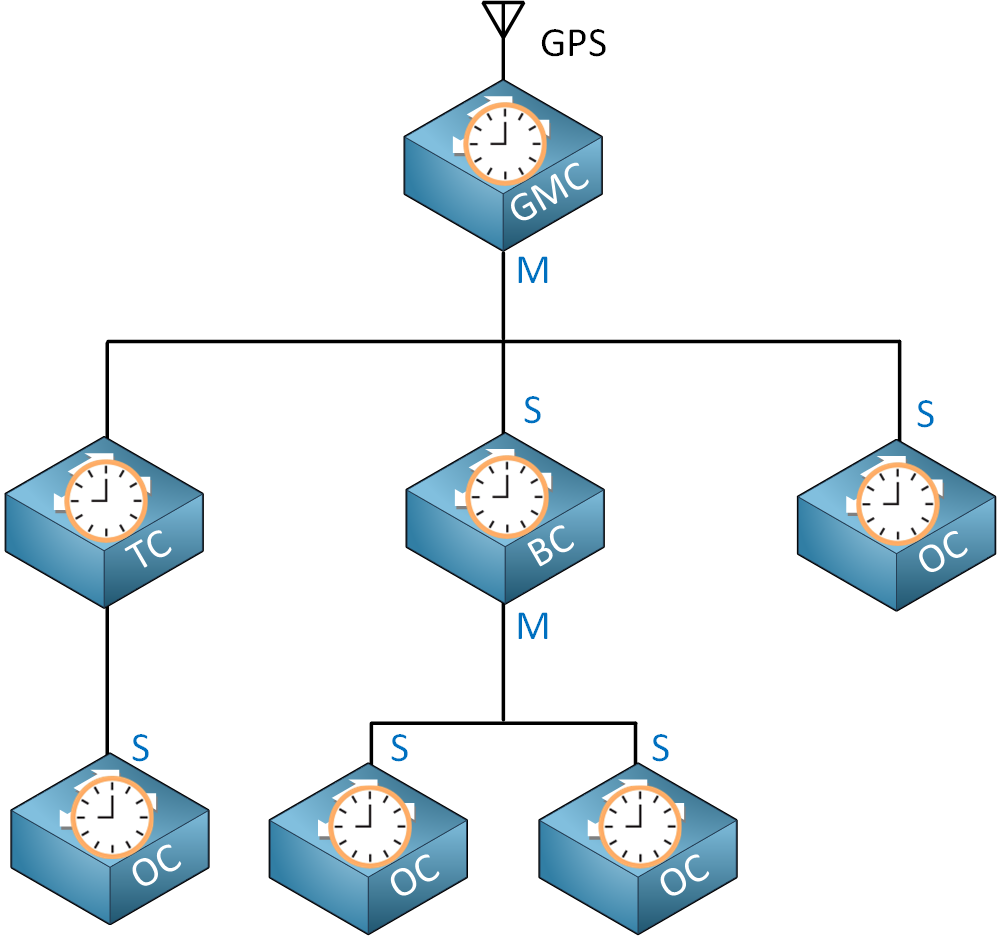PTP - Clock Types
PTP - Precision Time Protocol|Precision Time Protocol (PTP) is a protocol used to synchronize clocks throughout a computer network. Each network device can represent a specific clock type:
- Grandmaster clock (GMC) - The grandmaster clock (GMC) is the primary source of time in PTP and is responsible for root timing reference. This clock is connected to a reliable time source, such as GPS or an atomic clock. All other clocks synchronize directly or indirectly with the grand master clock. The grandmaster clock always has the master role on its interface(s).
- Ordinary clock (OC) - The ordinary clock (OC) runs PTP on only one of its interfaces. This interface can have the slave or master role. This is usually an end device that needs its time synchronized.
- Boundary clock (BC) - The boundary clock (BC) runs PTP on two or more interfaces. It can synchronize one network segment with another. The upstream interface that connects to the grandmaster clock has the slave role. The downstream interface that connects to other clocks has the master role.
- Transparent clock (TC) - Transparent clocks (TC) were introduced in PTPv2, and their goal is to forward PTP messages. They can’t be a source clock like a grandmaster or boundary clock. They can forward PTP messages within a VLAN but not between VLANs.
The following diagram shows a topology that indicates the various types of clocks:

The determination of the type of clock each device becomes depends upon the PTP - Best Master Clock Algorithm, an algorithm that also determines the interface roles of master and slave.
Links
https://networklessons.com/ip-services/introduction-to-precision-time-protocol-ptp